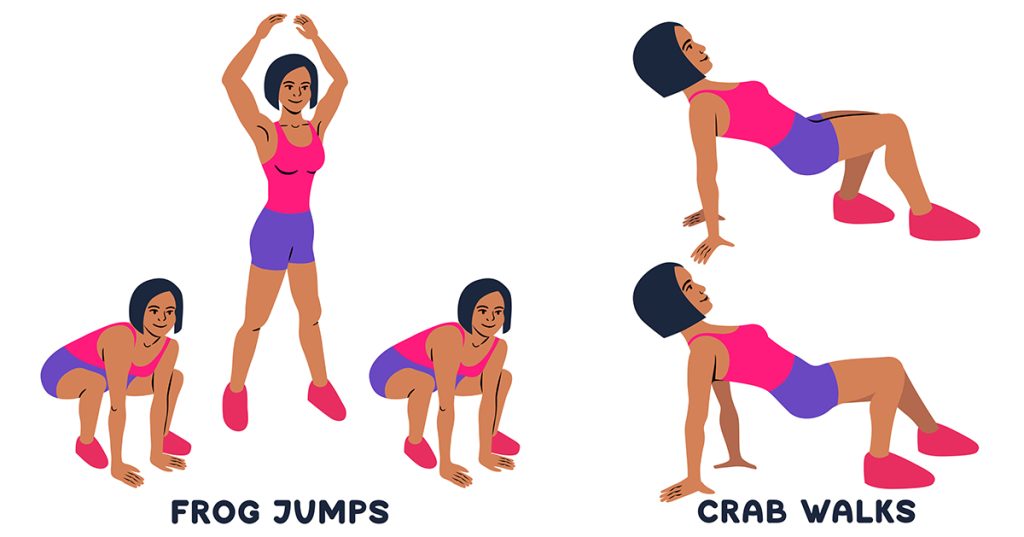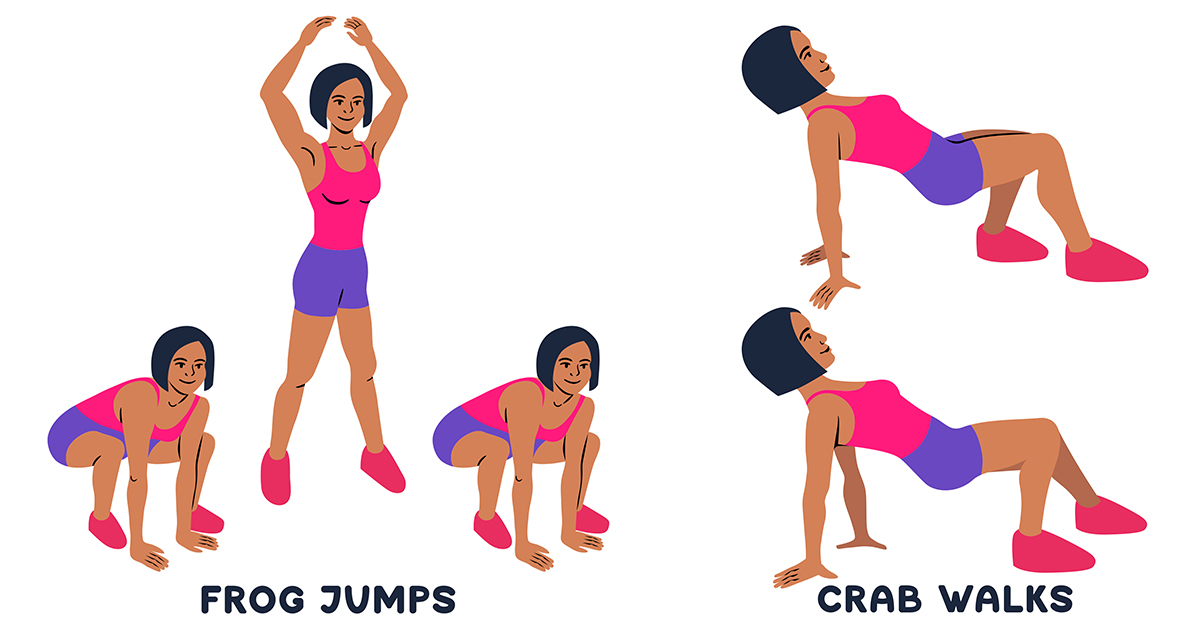Introduction to Biomimicry and Exercise
Biomimicry, the practice of looking to nature for inspiration and solutions to human problems, can be a valuable tool and designing exercise programs. By studying the movements and behaviors of animals, we can learn how to move more efficiently, effectively and with less injury.
Here are a few examples of how mimicry can be applied to exercise programming:

Mimicking the movements of animals: Many animals have unique ways of moving that can be emulated in exercise programs. For example, the frog jump is a plyometric exercise that mimics explosive jumping of a frog, while the crab walk works lateral movement of the hips and shoulders in a way similar to how crabs move.
Utilizing natural resistance: Resistance training is a common component of exercise programs and bio mimicry can offer new ways to approach it. For example, using a slosh pipe, which is a PVC pipe partially filled with water or some other solution, can stimulate the resistance of carrying something like a baby car seat which is very practical.
Incorporating balance instability exercises: Animals have evolved to a move in environments that require balance and stability, and we can learn from them in designing exercises that challenge our own balance and stability. For example, the bird dog exercise, which involves extending the opposite arms and legs while balancing enough force, mimics the stabilizing movement of a hunting dog.
Emphasizing functional movements: Many exercises in the gym isolate individual muscle groups, but biomimicry can remind us to focus on functional movements that are more relevant to real life activities. For example, the farmers walk, which involves walking while holding heavy weights in each hand, mimics the practical movements of carrying groceries or moving furniture.
By incorporating biomimicry into exercise programming, we can create workouts that are not only effective, but also enjoyable and engaging. Additionally, by working with our bodies instead of against them, we can reduce the risk of injury and improve overall physical health.
Reprinted with permission from author.
Mike Rickett MS, CSCS*D, CSPS*D, RCPT*E is a nationally recognized health and fitness trainer of the trainers, fitness motivator, author, certifier, educator, and the 2017 NSCA Personal Trainer of the Year. He has been a fitness trainer for more than 35 years. He directs the personal training site, ApplicationInMotion.com. In addition, he also directs BetterHealthBreathing.com, a conscious breathing educational program focusing on the diaphragmatic technique to enhance overall wellness.

